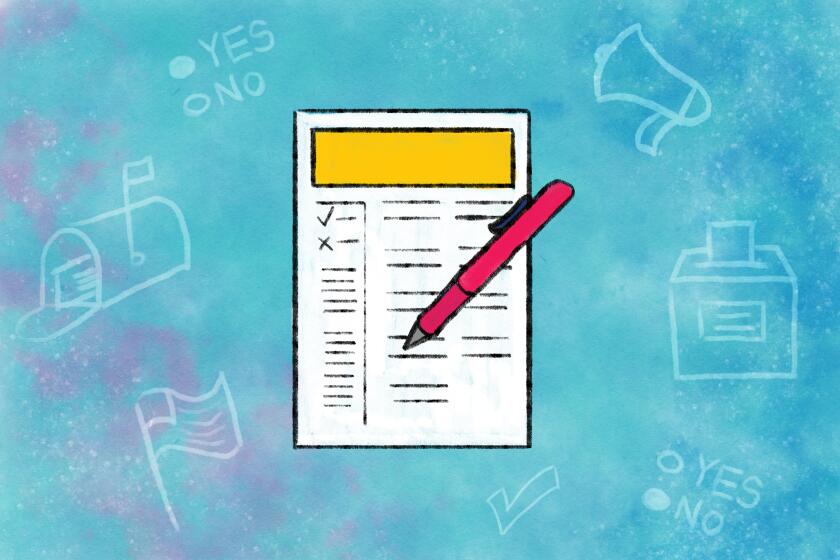Dive-bombing drones deployed by Russia in Ukraine cast spotlight on Iran
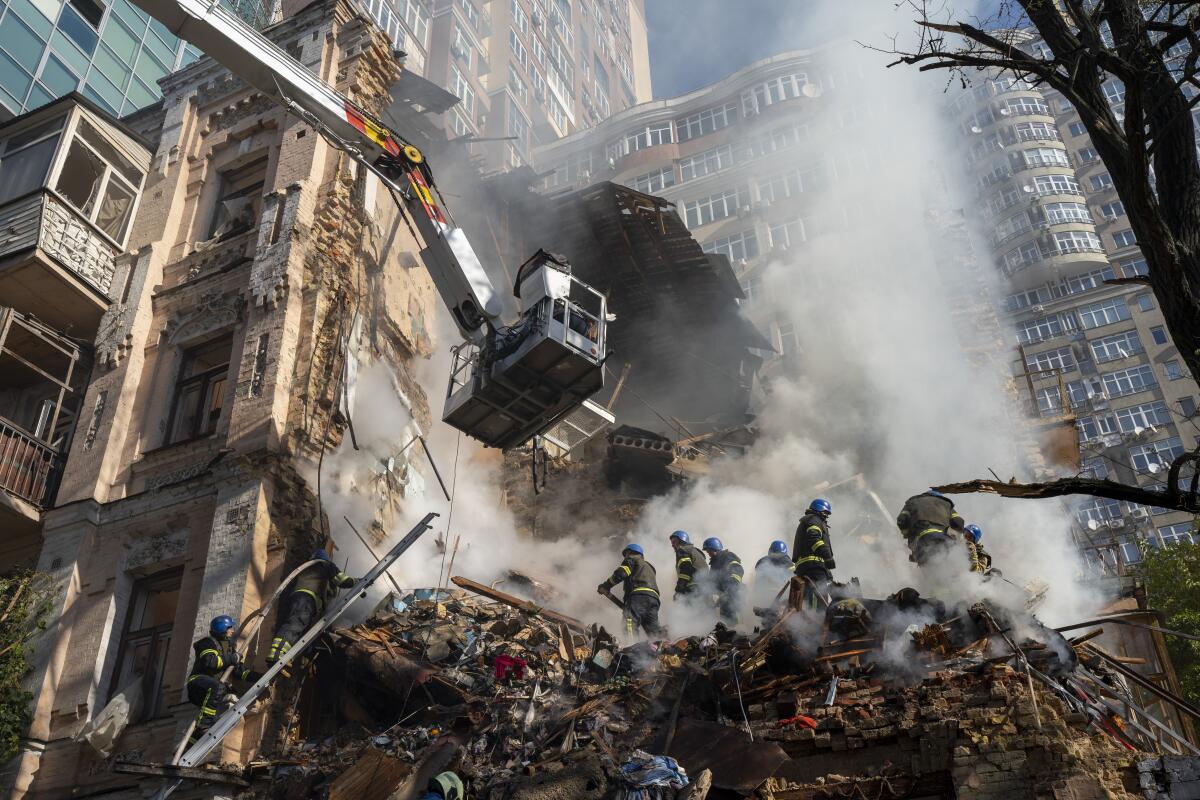
- Share via
BEIRUT — It streaks across the sky and then — when it’s almost too late to take cover — lets off a guttural sound like a moped blitzing by. Moments later comes the punch-boom of a deadly explosion.
Small, propeller-driven drones were first used last month by Russia in its ongoing war on Ukraine. But this week they have taken to the forefront, with dozens deployed daily to dive-bomb Kyiv, Dnipro and Mykolaiv, targeting Ukraine’s power infrastructure and causing blackouts across the country. At least eight people have been killed in the strikes, Ukrainian authorities say.
Though their markings are in Russian and Moscow refers to them as the Geran-2, Pentagon officials, Ukrainians and observers say the weapons are Iranian-made Shahed-136s, nimble, so-called kamikaze drones (because they destroy themselves in the attack) that can travel thousands of miles before slamming into a target.
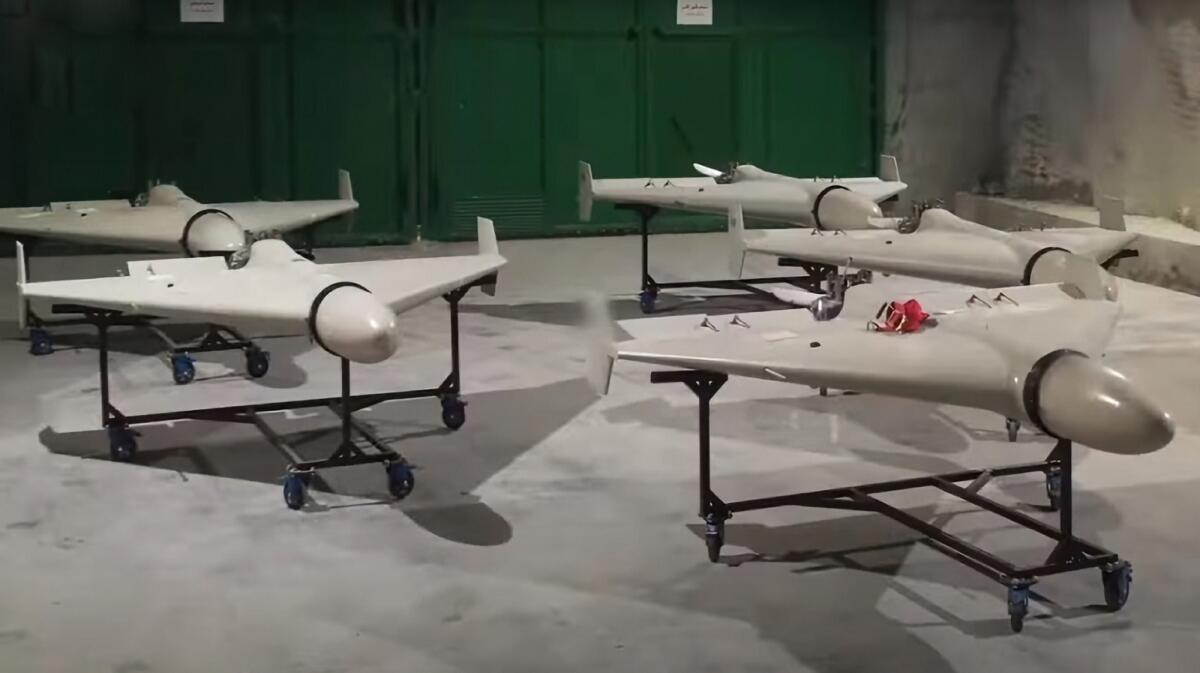
They came as part of a package comprising thousands of unmanned aerial vehicles, or UAVs, that Moscow imported from Tehran earlier this year to replenish its own rapidly vanishing stock of long-range precision missiles. And Thursday, the White House said the U.S. had evidence that a small number of Iranian troops were “directly engaged on the ground” in Russian-occupied Crimea to help launch the drones against Ukraine.
The Iranian drones “are killing civilians and destroying civilian infrastructure in Ukraine,” said White House National Security Council coordinator John F. Kirby in a news briefing.
California’s 2022 election ballot includes races for governor, attorney general, Legislature and Congress, local contests and statewide propositions.
Russia and Iran repeatedly deny such accusations. Tehran says it supports a peaceful resolution to the eight-month conflict and has called on Ukraine to provide evidence of the drones’ deployment.
“We have defense cooperation with Russia, but sending weapons and drones against Ukraine is not our policy,” Iranian Foreign Minister Hossein Amir-Abdollahian told European Union foreign policy chief Josep Borrell in a phone conversation Thursday.
Yet at the same time, Western condemnation has drawn boasts from Iran’s military leaders such as Maj. Gen. Yahya Rahim Safavi, who said in a speech Tuesday that Iran’s drones have become so effective that “today we have reached a point that 22 world countries are demanding to purchase unmanned aircraft from Iran.”
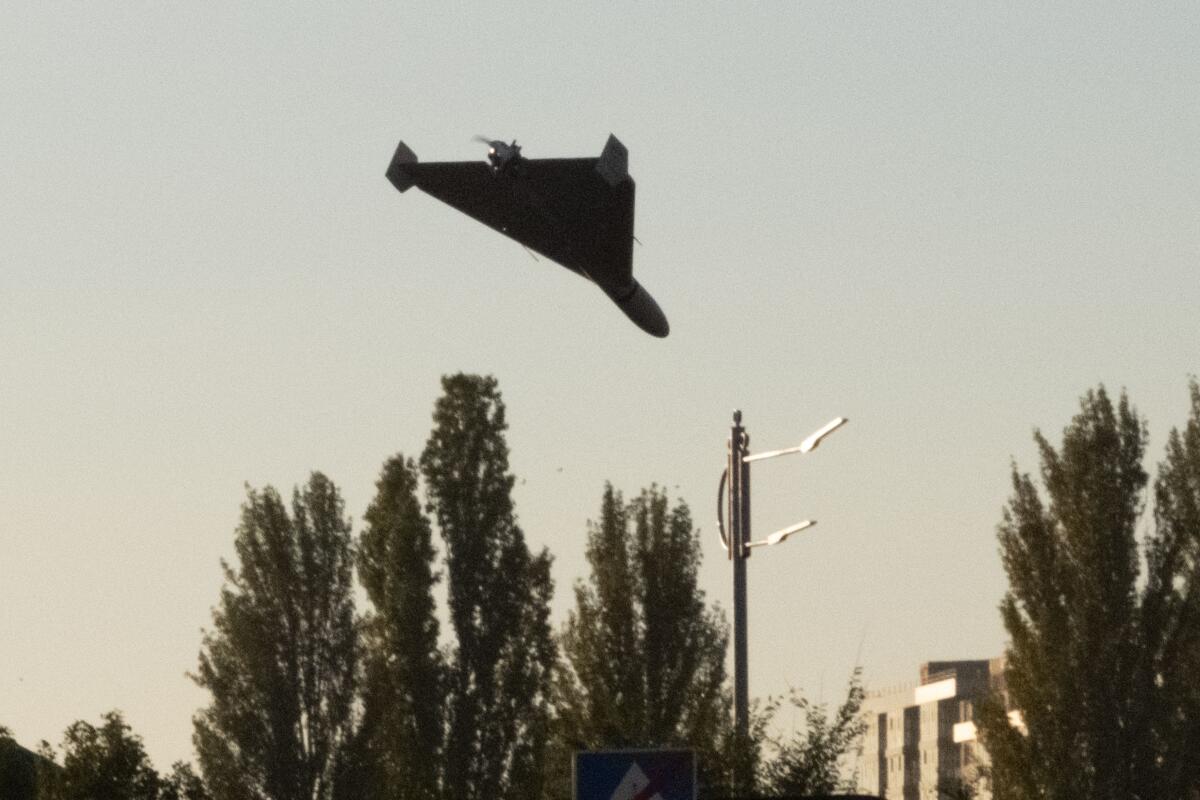
A day later, Supreme Leader Ayatollah Ali Khamenei also appeared to reference the drones, saying they were “feats” that “bring honor to our country.”
“When images of Iranian drones were published a few years ago, they would say they’re photoshopped. Now they say Iranian drones are dangerous, why do you sell them or give them to so-and-so?” Khamenei said, according to a report from the state-owned Islamic Republic News Agency.
Iranian drones have been used for years in deadly attacks in Yemen, Iraq, Lebanon, Ethiopia, Saudi Arabia and the United Arab Emirates — often with little response. But their appearance in Ukraine’s skies and the growing diplomatic storm that has caused highlight how the Russian invasion continues to force governments to contend with a Cold War-style calculus that accepts increasingly less overlap between the West and Russia.
Saudi Arabia ran afoul of that equation earlier this month when it pushed oil production cuts at an OPEC+ meeting, infuriating the U.S., which said that the move signaled Riyadh had sided with Moscow and that it would now have to review its longstanding relationship with its Middle East ally.
Drone sales have also prompted geopolitical recalculations.
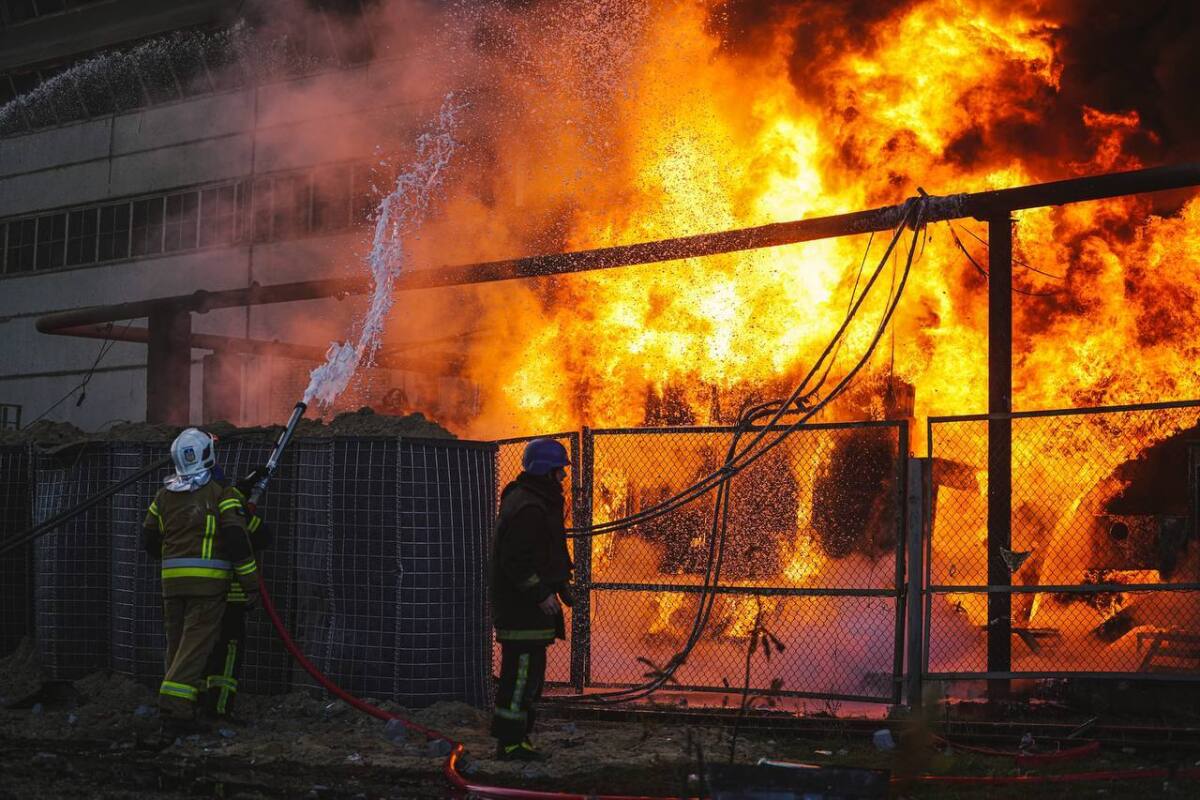
For Iran, which had a relatively amiable relationship with Ukraine, fractures first appeared in September, when Ukrainian forces began shooting down hundreds of drones, including what they said were Shahed-136s. In response, officials in Kyiv downgraded relations with Tehran, stripping the Iranian ambassador of his accreditation and reducing diplomatic personnel at the embassy.
This week’s attacks pushed Ukrainian Foreign Minister Dmytro Kuleba to propose a full severing of diplomatic ties with Iran.
Leaders in Tehran would “bear the most severe responsibility” if they continue arms sales, Kyiv said, while inviting United Nations Secretary-General António Guterres to dispatch inspectors and examine the wreckage of the more than 220 drones it claims to have destroyed thus far. The arms transfers, the U.S and Ukraine say, violate U.N. sanctions against Iran and Security Council Resolution 2231, which is related to the 2015 Joint Comprehensive Plan of Action, or JCPOA, with Tehran to limit its nuclear program.
The proposal, publicly supported by several U.N. Security Council members after the body’s closed-door meeting Wednesday, infuriated Moscow, whose Deputy U.N. Ambassador Dmitry Polyanskiy said afterward that the Guterres team should “not go beyond their technical mandate.”
“Iran is of the firm belief that none of its arms exports, including UAVs, to any country” violate resolution 2231, Iran’s U.N. envoy, Amir Saeid Iravani, told reporters Wednesday.
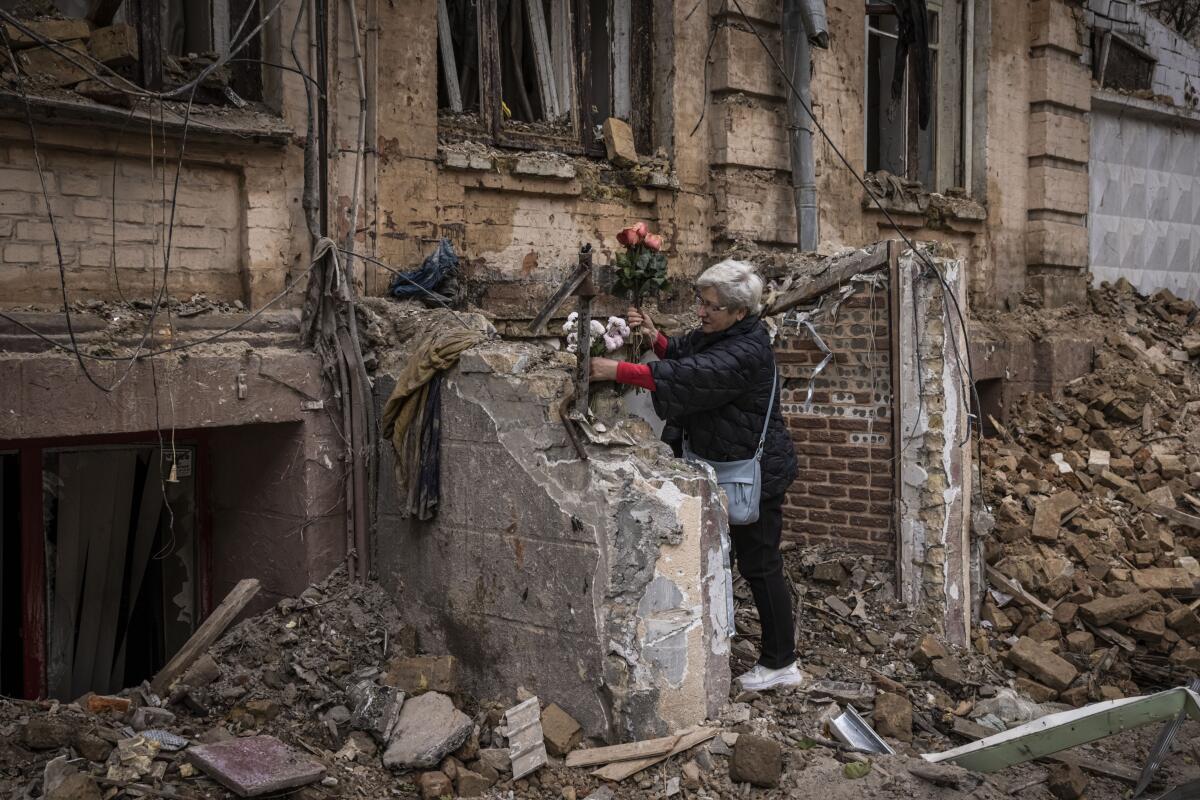
The threat of additional sanctions — on what is already one of the world’s most heavily sanctioned nations — comes at a difficult time for Iran, rocked by weeks of protests after the death of 22-year-old Mahsa Amini while in the custody of the so-called morality police.
Those demonstrations have become an expression of wider grievances, including what many view as the government’s intransigence in negotiations that could provide sanctions relief. Meanwhile, polls show the Iranian public doesn’t view Russia favorably and believes the invasion of Ukraine is illegitimate.
It’s unlikely Iran would accept punishment in the name of supporting Moscow. And before the drone sales, trade between the two countries was $4 billion, hardly worth the financial hit from more sanctions.
Yet it’s a calculation Tehran appears willing to make, said Ali Vaez, who directs the Iran project at the International Crisis Group, even at the expense of completely killing off the nuclear deal.
“The view there is: Why should they abandon Russia at the time of its need, when even if the JCPOA is restored, they’re completely disillusioned about its effectiveness and the durability of sanctions relief that it offers?” Vaez said. “The strategic priority, for Iran, of preventing Russia’s failure in the Ukraine conflict is bigger than the restoration of the JCPOA.”
Another Middle East power facing a balancing act with sales of UAVs in the conflict is Turkey. Its Bayraktar TB2 drones — a medium-sized aircraft that can launch missiles — have in years past faced off against Russian armor and Russia-aligned fighters in Syria, Libya and Nagorno-Karabakh. Now in Ukraine they hunt Russian troops, with Kyiv deploying the dozens of TB2s it purchased to such powerful effect that Ukrainians dedicated a song to the drone’s battlefield prowess.
At the same time, Russia is a vital economic trading partner: It provides almost half of Turkey’s natural gas and almost three-quarters of its wheat. Some 4.7 million Russian travelers visit Turkey every year.
Diplomatically, Turkey has hedged: It condemned the invasion but nevertheless refused to levy sanctions and continues to welcome Russian oligarchs and other visitors. It also worked on a deal that allowed grain shipments to leave Ukrainian ports despite a Russian sea blockade.
Though Russia complained to Turkey over the Bayraktar TB2 sales, Ankara said Kyiv had purchased the drones in a private capacity and did not constitute an agreement between the two governments. For now, Moscow appears to have been mollified: Baykar, the company that produces the TB2s, continues to sell them to Ukraine even as Ankara says it can play the role of intermediary between Moscow and the West.
The ripple effects of the presumptive Iranian drone attacks have also hit Israel, a top U.S. ally with strong links to Russia.
Roughly 15% of Israel’s population (some 1.3 million people) are Russian-speaking immigrants — with more Russian emigres arriving by the month because of the Ukraine war, according to Israeli government statistics.
Israel also works with Moscow to coordinate military maneuvers in Syria, where Russia has bolstered forces loyal to Syrian President Bashar Assad since 2019 while turning a blind eye to Israeli strikes over Syrian territory on what it says are targets affiliated with Iran, Israel’s regional nemesis.
And the Israelis have previously exported UAV tech and components to Moscow, including two surveillance drones deployed by the Russian army, the Zastava and Forpost, licensed copies of Israeli-built platforms, according to a report from Conflict Armament Research.
When Russia invaded Ukraine in February, Israel didn’t join in the U.S. and European Union economic sanctions, but it did dispatch humanitarian aid — including helmets and bulletproof vests for rescue teams — to Ukraine.
Fearing Russian umbrage, Israel has thus far refrained from providing Kyiv with military assistance, despite repeated entreaties. But with its arch-nemesis now embroiled in the conflict, its position appears increasingly untenable.
This week, an Israeli lawmaker demanded the government change its stance. That appeared to elicit a response from former Russian president and top Putin ally Dmitry Medvedev, who warned Monday that arming Ukraine would be “a very reckless step” that “would destroy government relations between our countries.”
A day later, Ukrainian Foreign Minister Kuleba reiterated a long-standing request for Israel to “urgently provide … antiaircraft systems and to start high-quality cooperation on obtaining appropriate technologies for Ukraine.”
“Iran is a red line for Israel, and after Iran has directly, in fact, become complicit in the crime of aggression against Ukraine, I think anyone in Israel who still has any hesitation about whether or not to help Ukraine, he must dispel these hesitations,” Kuleba said.
But Israel refused again.
“Israel will not deliver weapon systems to Ukraine due to a variety of operational considerations,” Israeli Defense Minister Benny Gantz said during a meeting with EU ambassadors in Tel Aviv, adding that Israel would continue to support Ukraine “within our limitations.”
That, however, is not enough, Ukrainian Ambassador to Israel Yevgen Korniychuk said.
“You can’t win the war with air defense alert systems. We asked for defensive weapons, and they have all our requests and no reply,” he said in a CNN interview Wednesday.
“It’s like when you’re going to the market and you’re asking someone for the bread, and instead of the bread they give you the spoon.”
More to Read
Sign up for Essential California
The most important California stories and recommendations in your inbox every morning.
You may occasionally receive promotional content from the Los Angeles Times.
